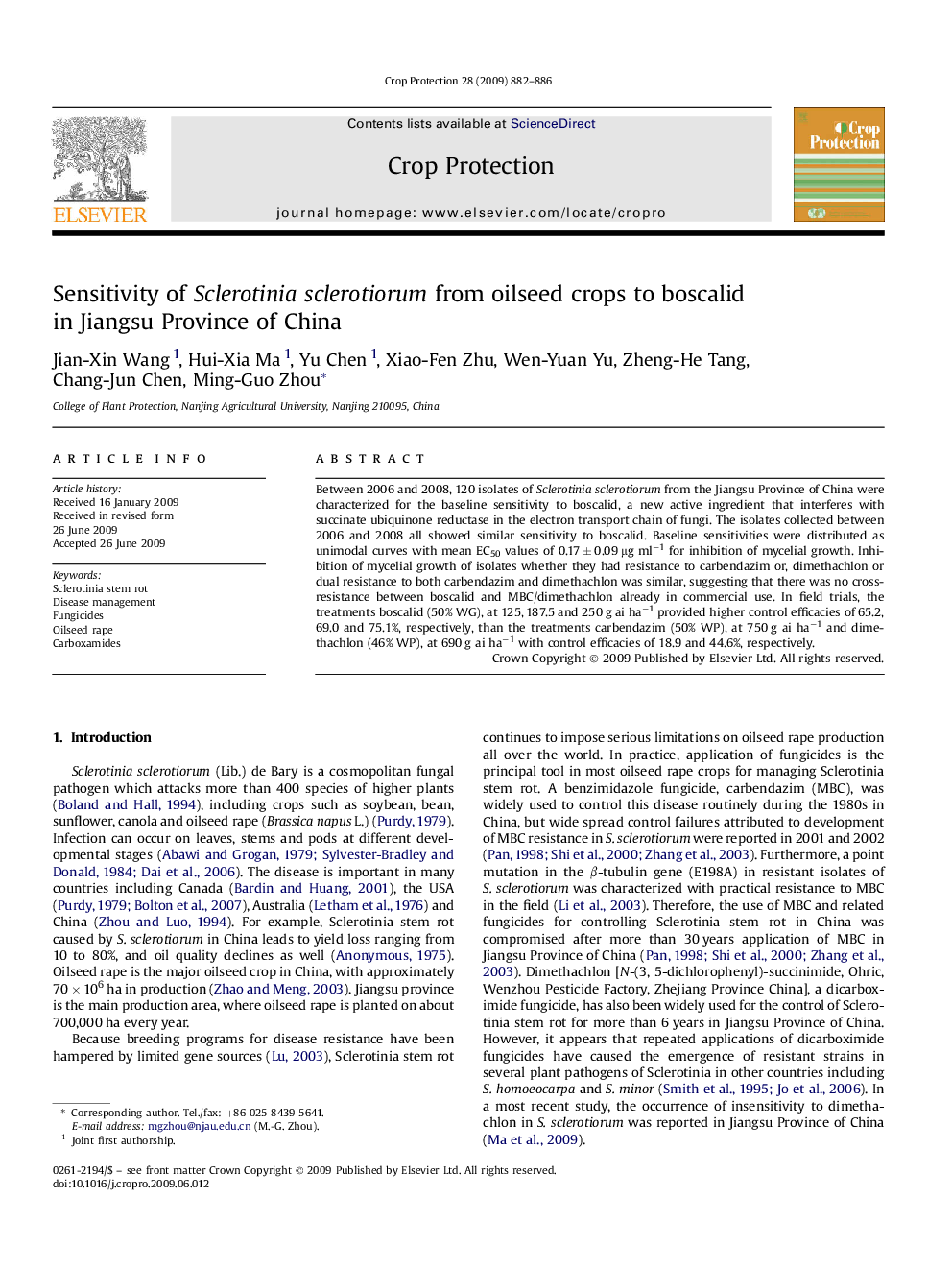| Article ID | Journal | Published Year | Pages | File Type |
|---|---|---|---|---|
| 4507309 | Crop Protection | 2009 | 5 Pages |
Between 2006 and 2008, 120 isolates of Sclerotinia sclerotiorum from the Jiangsu Province of China were characterized for the baseline sensitivity to boscalid, a new active ingredient that interferes with succinate ubiquinone reductase in the electron transport chain of fungi. The isolates collected between 2006 and 2008 all showed similar sensitivity to boscalid. Baseline sensitivities were distributed as unimodal curves with mean EC50 values of 0.17 ± 0.09 μg ml−1 for inhibition of mycelial growth. Inhibition of mycelial growth of isolates whether they had resistance to carbendazim or, dimethachlon or dual resistance to both carbendazim and dimethachlon was similar, suggesting that there was no cross-resistance between boscalid and MBC/dimethachlon already in commercial use. In field trials, the treatments boscalid (50% WG), at 125, 187.5 and 250 g ai ha−1 provided higher control efficacies of 65.2, 69.0 and 75.1%, respectively, than the treatments carbendazim (50% WP), at 750 g ai ha−1 and dimethachlon (46% WP), at 690 g ai ha−1 with control efficacies of 18.9 and 44.6%, respectively.
